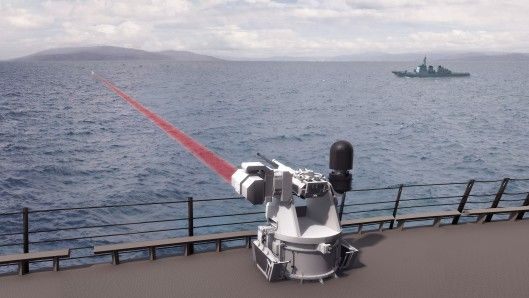 Suitable against UAV drones or will piss off Godzilla.
Suitable against UAV drones or will piss off Godzilla.
Posted on 07/29/2015 5:26:48 PM PDT by BenLurkin
Japan claims to have fired the most powerful laser ever created.
Researchers in Osaka were able to produce a 2-petawatt laser beam using a device known as the Laser for Fast Ignition Experiment (LFEX).
The power of the 'Death Star'-like beam is equivalent to 1,000 times the world's total electricity consumption, the scientists claim. While it produced a huge amount of power, the energy required for the beam itself is equivalent to that needed to power a microwave for two seconds.
The team were able to produce such a high output from low energy by only firing the laser beam for 1 pico-second, or a trillionth of a second.
(Excerpt) Read more at dailymail.co.uk ...
That was the input energy. The output was very high, but only for a trillionth of a second.
No matter how you say it, it’s still a lottawatt.
So what I learn from this is that if you make the dominator large enough, you can claim anything.
Ooh, I’ll be the Dominator, you be the Subinator...
Now all we need is a supercapacitor that can charge in 1 pico-second.
“Check back in a couple of years, you might be surprised. This has the looks of a breakthrough.”
I think you posted to the wrong one.
Aim it at Nork, see what happens
Sorry, I did.
as a conductor, maybe
So that’s why the lights flickered the other day during clear weather.
Danged near as fast as a fart.
I would think a few thousand mirrors with the sun’s reflection and it’s exact positioning via GPS positioning could create some fine laser.

Way faster than mine, but then I try to make little songs with mine if I can.
Ok, basic science here. It can’t have put out more energy than was put in. The capacitors / batteries used to store the energy we charged for an extended period of time. The total energy put out for an infinitesimal period of time was a percentage of the sum of the energy put in.
Even as I write this, I think I see an answer to my question. It was a certain amount of TOTAL energy, stored over time to charge the capacitors, all discharged in that one tiny moment.
The microwave oven is a false flag comparison.
Zap anything in it’s way.
"What's the other problem, then?"
"The problem is the beam junction, you know, at the apex of the firing cone, where the eight beams meet at a point."
"Okay, so?"
"The idiots who designed this superlaser don't know jack about the Pauli exclusion principle. What a bunch of morons."
My lack of education was showing itself. "Can you translate that for me, please?"
"Sure thing. The Pauli exclusion principle is the idea that there is no limit to the number of photons that can occupy the same quantum state or the same position in spacetime. That is an over-simplification, I mean, for starters it works for all bosons, not just photons, but that's basically it, more or less."
"No limit."
"Yeah, there's no limit. You can cram in as many photons into as tight a space as you want, and there's always room to jam in some more. They don't interact. No limit."
"No limit. Well that's why this superlaser fires photons and not, say a plasma, right? 'No limit' is basically the whole idea of the exercise, yes?"
"Right. Hey, you're pretty smart. The Pauli exclusion principle means that the photons never interact with each other, not directly. They literally can't collide. The photons from the eight laser generators will just pass right through each other at the apex of the cone. They can't cancel out their momentum, merge, and fire one big shared beam out in a straight line from the apex. Photons just don't work that way."
"So what are you going to do?"
"I'm afraid I gotta use some Applied Phlebotium. I really don't like to do that. It's such a kludge."
"Applied Phlebotium?"
"Yeah. It's this glowing stuff in my bag here. See it? It works like magic!"
"Like magic?"
"Yeah, like magic! I just have to rub some on the apex focuser and voilà, the Pauli exclusion principle is violated for bosons! Neat, huh?"
"Uh, yeah, I guess.. but isn't that just cheating?"
"Hey, don't ask me. Ask the idiots who designed this thing. Stupid imperial retards. It could never work the way they designed it. Who was their scientific advisor on this project, Daffy Duck or something?"
"Okay, well, uh, good job. Carry on."
(Excerpt from The Fifth Kind of Love chapter 18)
Yep you got it, 1 trillionth of a second.
Somebody else will have to do the math formulas to see how that would relate in consumption to output of today’s lasers.
I think the biggest thing to come from the breakthrough may be that energy storage capacity.
Let’s add this clarification:
From the time the laser turned on, the first light out of the box traveled one third of one millimeter before the laser turned off.
To say China (and N. Korea) is interested would be an understatement.
Disclaimer: Opinions posted on Free Republic are those of the individual posters and do not necessarily represent the opinion of Free Republic or its management. All materials posted herein are protected by copyright law and the exemption for fair use of copyrighted works.